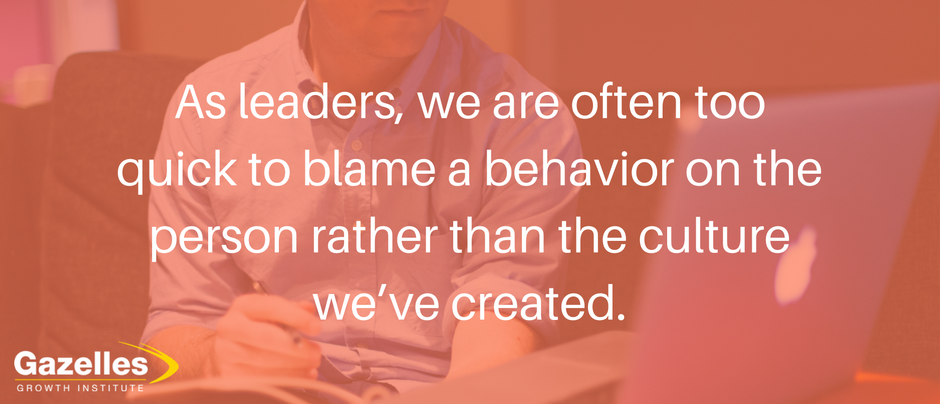Fix the environment, not the people - 4 levers for affecting the culture.

We know that environment has a large impact on people’s behavior, yet as leaders, we are often too quick to blame a behavior on the person rather than the culture we’ve created. This is easier, because while they are responsible for their behavior, we are responsible for the culture.
Parents instinctively know this. One day their child plays with the “right” group of people and behaves decently. The next day, their child plays with the “wrong” group of people, and doesn’t play nice. Parents react by trying to keep their children playing with the right kids because they understand that nothing has changed about their child from one day to the next other than the environment they were in.
In 1973, John Darley and Daniel Batson performed a seminal study to see the impact of environmental factors on behavior, now referred to as the Good Samaritan Study. Study participants went one by one to an office where they received instructions to go to another room across campus where they thought they were giving a talk. The instructions varied the degree of urgency participants would feel. One third were told they had plenty of time; one third were told they would be just in time and one third were told they were already late.
Along the way, the psychologists had staged a man lying on the ground in distress that the study participants had to walk right past, and in some cases step over. The question was how many people would help this person in distress.
Of the people who were told they have plenty of time, 63% helped. Of the people who were told they were just in time, 45% helped. Of the people who were told they were already late, only 10% helped. Since all three groups were randomly drawn from the same population of seminarians, their propensity to help others ought to have been about the same. Yet, the actually behavior of helping a person in distress was dramatically affected by their sense of urgency – whether they thought they were late or not.
The sense of urgency and the culture more broadly is the leader’s responsibility. Here are four ways leaders affect culture.
- Leaders control the physical environment.
Replacing smaller tables with larger ones in the lunchroom results in people interacting with more people in their company and a wider transfer of information across business units. This is more effective than giving a lecture on sharing information. - Leaders model the behavior.
In a study from the 1960s, children saw adults play with a Bobo doll, a large self-righting inflatable doll like a bowling pin. Children who observed adults playing nicely also played nicely when they were left alone with the doll. Children who observed adults being aggressive toward the doll were also aggressive when left alone. It’s important that the leader live the culture because the actions of the leader will have more impact than words, slogans, and posters. - Leaders implement mechanisms that will rewire the brain.
For example, on the USS Santa Fe we started to refer to everyone on the submarine, whether officer or enlisted, or in supply or engineering, as “we.” Initially it felt like a contrivance but eventually we felt more and more like a team. This was because teammates refer to each other as “we” and the rest of the world as “they.” But it also works the other way round, people who refer to each other was we, will see others as part of their team. - Leaders embed the DNA of the culture in their policy documents.
I think this is the tool most underused by leaders. Let’s say a leader wants people to “take initiative” and “be empowered.” We’ve found that a simple change to a delegation of authorities document stating clearly the decision-making authority of people lower in the organization will do much more to create a culture of empowerment than speeches.
Remember, the environment matters a lot to our behavior, more than we generally give it credit for and shaping the environment is the leader’s responsibility.
How do you affect the culture of your organization?
Want to learn more about David's leadership strategy?
Watch the recorded webinar from Monday, August 29th. Click here to watch!





